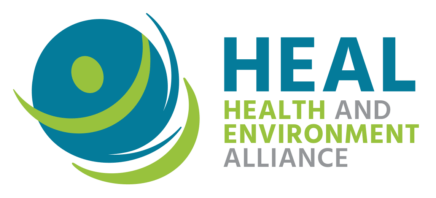Are you our new Communications Officer?
We are exposed to a wide mix of potentially harmful chemicals on a daily basis. To assess whether and how exposure to chemical substances can impact our health and the environment, European and national regulatory authorities rely on the results from several testing methods, including animal testing, when performing their safety assessment.
Understandably, the use of animal experiments raises multiple moral questions. All stakeholders involved in chemical regulatory discussions share the long-term goal of moving away from animal testing. However, completely getting rid of animal tests for chemical safety assessments overnight would constitute a serious threat to our health as well as wildlife. As long as alternative methods validated and accepted for regulatory use are not available, and without the full implementation of a precautionary approach, animal tests are the only viable way to assess whether or not a chemical is hazardous to our health or the environment.
In this Q&A, the Health and Environment Alliance (HEAL) answers several key questions about the use of animal testing in the European Union. A glossary is also available at the end of this page.
 Why is animal testing still being used for chemical safety testing today, while alternative methods already exist and more are being developed?
Why is animal testing still being used for chemical safety testing today, while alternative methods already exist and more are being developed?
Today, European and national regulatory authorities assess the safety of chemicals on the basis of a variety of information, including scientific literature as well as tests performed in vivo (on living organisms such as rodents, fish, amphibians), in vitro on isolated cells or tissues, and increasingly in silico (using computer models).
While all stakeholders engaged on chemicals share the goal to progressively eliminate tests performed on animals and core pieces of EU legislation on chemicals refer to this goal, it is unfortunately currently not possible to fully do without them for several reasons that are detailed further below. There are however important developments in the right directions and reasons for optimism.
- While Europe has the most advanced framework for chemicals assessment and regulation in the world, the key ‘no data, no market’ principle of REACH is not implemented today and there are significant knowledge gaps about the hazard properties of the chemicals already in use.
The European Environment Agency estimates that comprehensive hazard information is only available for 500 of the 100,000 chemicals that are on the market today, describing the situation as an “unknown territory of chemical risk”. This means that if we are to abide by our legal principles and to ensure people’s and wildlife’s protection, either more chemicals safety data urgently needs to be generated, or a majority of substances should be withdrawn market access.
- For certain health impacts related to chemical exposure (referred to as endpoints), it is currently not possible to meet regulatory definitions without animal tests.
Let’s take the example of endocrine disruption. According to the World Health Organization (WHO) definition which is referred to in EU legislations, an endocrine disrupting substance meets three criteria:
- The substance shows an adverse effect on an intact organism or its progeny;
- The substance shows endocrine activity;
- There is a biologically plausible link between the adverse effect and endocrine activity.
As of today, using non-animal approaches such as in vitro tests on cells might be informative regarding certain elements of this definition, for instance to elucidate the endocrine mode of action of a chemical. However, in vitro tests alone do not allow us to assess complex adverse effects that chemicals may have on an organism, for example, effects on the brain or the metabolism across generations. These effects can typically be seen when performing tests on animals. That is why non-animal approaches such as in vitro tests cannot be used on their own to meet regulatory definitions of certain endpoints.
Important progress is currently being made in the development of in vitro and in silico tests, but they will not be fit to address the complexity of the assessment of adverse effects on organisms before a long time. Understanding this challenge is fundamental in order to understand why we are currently not able to identify critical hazards, such as endocrine disruption, according to established scientific knowledge without animal tests.
- Furthermore, EU chemicals regulations require a very high level of evidence in order to identify certain chemical hazardous properties and to regulate them.
For instance, under the EU regulation on classification, labelling and packaging (CLP) regulation, the identification of hazards such as carcinogenicity, endocrine disruption, or reproductive toxicity includes the requirement for positive evidence coming from tests performed in vivo. As mentioned above, currently other evidence coming from non-animal approaches is not sufficient on their own to proceed with such identifications, even if it can provide important indications of concern and important progress is expected in the future. It is therefore important to develop new regulatory approaches that promote a quicker hazard identification, based on predictions of harm and a lower level of evidence.
A practical illustration of such need can be found in HEAL’s recent analysis of the EU carcinogenicity assessment of pesticide active substance glyphosate, in which we have stressed that available animal evidence supports the carcinogenicity potential of the compound and should not be dismissed.
The good news is that the legislative framework is starting to gear up to transition towards new methodologies when they will be ready and make space for inclusion of the latest scientific progress in the field. For instance, the newly agreed hazard classes for endocrine disruption in the CLP regulation reference the use of non-animal data providing an equivalent predictive capacity as human and animal data in the evidence base to support the identification of endocrine disruptors. This means that when the methods are ready to deliver the same level of evidence, they can automatically be used for hazard identification.
 What are European authorities and agencies doing to reduce the use of animal testing?
What are European authorities and agencies doing to reduce the use of animal testing?
All stakeholders involved in chemical regulatory discussions share the goal of moving away from animal testing, when alternative strategies will be ready to comprehensively assess the safety of substances for human health and the environment. An important framework guiding this aim is known as the 3Rs – an approach based on the principles of replacement, reduction and refinement of animal tests. The increasing number of 3R activities and dedicated platforms over the last years illustrates the significant efforts already underway to meet these objectives. Even though this approach is commonly referred to in discussions about safety testing, it does not have legal implications, nor does it adequately reflect that it is currently not possible to fully eliminate animal testing.
Several European institutions, agencies and pieces of legislation have however already made steps to reduce the use of animal testing in EU chemical safety assessments.
- A recent European Parliament resolution illustrates this long-term commitment, but it also acknowledges that animal testing has played an important role in the development of health treatments, and also for the protection of animal health more generally. The resolution stresses that currently it is not scientifically possible to move away from animal testing, without negatively impacting the protection of health and the environment.
- The EU’s flagship chemicals regulation REACH requires companies to test their substances for safety and to submit the data to authorities for review in order to get access to the European market. The law provides that animal testing must be used as a last resort, if there are no other ways to assess the substance’s safety. At present, validated alternative methods exist to test for health effects that are short-term and acute (such as skin sensitisation, or eye irritation), but not to evaluate all relevant long-term health effects. This leaves authorities with no other options than requesting in vivo data to comprehensively assess the long-term effects of substances. It is however also important to stress that authorities are 1) increasingly encouraging companies to share their data on the same substances in order to avoid duplicating testing, and 2) moving towards grouping approaches for assessment in order to maximise the use of existing data for substances of similar structures and families.
- The EU cosmetics regulation bans the use of tests on animals for the purpose of safety assessments of substances used in cosmetic products. It does not have implications for safety testing obligations under other EU legal laws. Importantly, the cosmetics regulation focuses on the protection of cosmetic end-users, but it does not include workers’ protection. That is why REACH allows authorities to request animal tests for a substance with a cosmetic use under several circumstances: to assess the exposure of- and risk for workers manufacturing the substance; to assess environmental concerns; when the substance is used elsewhere than in cosmetic products (see relevant ECHA Board of Appeal 2020 decisions on the matter).
 What would getting rid of safety testing on animals mean in practice today?
What would getting rid of safety testing on animals mean in practice today?
Getting rid of animal tests for chemical safety assessments overnight would constitute a serious threat to our health and animals living in the wild. It would mean that scientists and regulators would lose an important tool for the assessment of long-term impacts of potentially harmful chemicals on health without yet having fully adequate replacements that are validated and accepted for regulatory use. Regulators would miss important information to be able to tell if a substance is of concern and requires further restrictive actions. In other words, chemicals with harmful properties would be left unaddressed without regulators and companies having a comprehensive knowledge about their properties, while people (including workers) would remain exposed to their long-term effects.
The only way forward to reconcile the dilemma is therefore to change the current regulatory system, which currently requires a high burden of proof for a substance to be recognised as having harmful properties. Instead, predictions of adverse effects and more precautionary action are needed (see also question 6 on the joint achievement of objectives of reduction in animal testing and health protection).
 How do different regulations compare when it comes to the use of animals for safety testing?
How do different regulations compare when it comes to the use of animals for safety testing?
Proponents of a swift end of safety testing on animals regularly point at chemicals regulations as one of the main culprits for the continued practice. However, existing figures about the regulatory use of animal tests shows a different reality. According to the European Commission, in 2019, only 17% of all tests carried out were for regulatory purposes. Of the tests undertaken for regulatory use, 9% was for chemicals, behind medicines for humans (61%), and veterinary medicinal products (18%).
It is also important to note that reliance on animal testing for chemicals’ assessment has decreased over the last years. According to the European Chemical Agency (ECHA), amendments made to REACH in 2016-2017 requesting company registrants to use alternatives to animal tests for the evaluation of certain health effects have had concrete results: for instance, by 2020, the use of alternative tests have increased more than 20-fold for skin sensitisation. Moreover, adaptations in how tests are being performed have also had an impact: regarding the assessments of effects of chemicals on reproduction, companies are increasingly using the combined repeated dose toxicity study with the reproduction/developmental toxicity screening test, which has led to a reduced use of animals and of testing costs.
 How can the EU reduce animal testing without compromising chemical safety?
How can the EU reduce animal testing without compromising chemical safety?
The goals of health protection and reduced reliance on animals for safety testing are not at odds with each other. They can be delivered jointly – provided authorities and stakeholders engaged in chemical regulation commit to a number of measures:
- Lowering the level of evidence necessary to identify chemical hazards and to regulate substances is the most practical way to reduce reliance on testing and the number of animals used.
- Being ready to apply the precautionary principle, when in doubt about the properties of a substance in order to avoid replicating testing.
- Making a better use of all the information available about chemical substances can make a huge difference:
- Improved uptake of independent peer-reviewed scientific literature in the context of regulatory assessments;
- More systematic use of grouping strategies, including QSAR and read-across, to avoid duplicating similar tests for compounds of similar structures and with close properties within the same family;
- More systematic efficient cross-use of safety data produced for the assessments of human health and environment impacts respectively;
- Data sharing between companies producing the same chemicals to reduce the number of tests commissioned;
- When in vivo tests are necessary, commitments from industry actors to provide regulatory authorities with studies carried out at appropriate dose regimes. It is currently common for industry to provide tests carried out at doses that do not allow authorities to properly assess the results (e.g., at too low doses to show adversity). This sometimes leaves authorities with no other option than requesting the reiteration of tests to be able to conclude safety assessments. See useful references on this issue here and here.
The success of these measures requires the readiness of all actors to cooperate transparently, based on the shared objective of increased protection of health and the environment.
 Are regulatory authorities to blame for the current level of use of animals for safety tests?
Are regulatory authorities to blame for the current level of use of animals for safety tests?
Regulatory authorities are regularly criticised for the current level of use of animals in the context of chemical safety testing. It is however important to clarify a number of points:
- When regulatory authorities ask for specific animal tests to be performed in the context of the identification and regulation of chemical substances, it is because doing so is necessary to comply with legal requirements (e.g., under REACH). No authority requests tests on animals without such tests being necessary or when other options are available to perform comprehensive safety assessments.
- A common limitation in regulatory discussions on chemical data is when studies are carried out by industry actors at wrong dose ranges (e.g., very low or very high concentrations), which can lead to results not showing relevant and/or consistent effects that can be interpreted with confidence in the context of a regulatory discussion. When this occurs, authorities can be left with no other options than asking for new tests. In order to avoid such situations, all stakeholders must carry their weight when it comes to the shared goal of reducing reliance on animal testing. This includes the industry’s responsibility to provide tests conducted at relevant dose regimes, to respect test protocols, and to measure all potential relevant criteria when investigating a specific effects, so that authorities are able to carry out their assessments properly and do not have to request additional data at a later stage.
 What is the link between animal testing and the protection of wildlife?
What is the link between animal testing and the protection of wildlife?
While the reduction of animal testing is an important objective that all stakeholders share and should work towards, it is still important to keep in mind that animal tests for chemical assessments also support the protection of wildlife in the broader context of environment protection.
Chemicals can have important impacts on our environment, which can be difficult to assess without animal data. For instance, the ability of a substance to cause endocrine disruption in wildlife is a critical aspect to assess with the current biodiversity crisis (see WHO-UNEP, State of the Science on Endocrine Disrupting Chemicals, 2012). Yet, this assessment is not possible without data coming from certain species that are relevant when looking at environmental impacts (for instance, certain fishes and amphibians). Moreover, due to data scarcity, it is sometimes not possible to assess the endocrine disrupting risks of a compound for wildlife without the help of existing data from assessments of endocrine disruption effects for human health. Therefore, the responsible use of animal tests for chemical safety contributes to the broader protection of wildlife and the long-term survival of species that also play an important part of keeping our environment livable for all beings (animals and humans alike).


 What are European authorities and agencies doing to reduce the use of animal testing?
What are European authorities and agencies doing to reduce the use of animal testing? What would getting rid of safety testing on animals mean in practice today?
What would getting rid of safety testing on animals mean in practice today? How do different regulations compare when it comes to the use of animals for safety testing?
How do different regulations compare when it comes to the use of animals for safety testing? How can the EU reduce animal testing without compromising chemical safety?
How can the EU reduce animal testing without compromising chemical safety?  Are regulatory authorities to blame for the current level of use of animals for safety tests?
Are regulatory authorities to blame for the current level of use of animals for safety tests?  What is the link between animal testing and the protection of wildlife?
What is the link between animal testing and the protection of wildlife? 
